Life at Whispirit is not just about making fun fabrics and garments; it’s also about breeding and raising livestock in the rural and mountainous environment of New Mexico, which is also home to many forms of wildlife who are natural predators to our herd.
Eight years ago when were setting up our alpaca operation, we studied the local predators. Coyotes are very numerous in our area. We hear and see them virtually every night. We have seen pictures taken by our neighbors of less frequent but still present bobcats, black bears and mountain lions. We set about making it harder (hopefully) for these predators to enter our property. For the alpaca pens we erected 6 ft. high fences set in concrete. We made sure that we stored all food supplies in tight containers and took down hummingbird feeders in bear season so as not to create temptations. We frequently walk the ranch border checking for holes in the fence line.
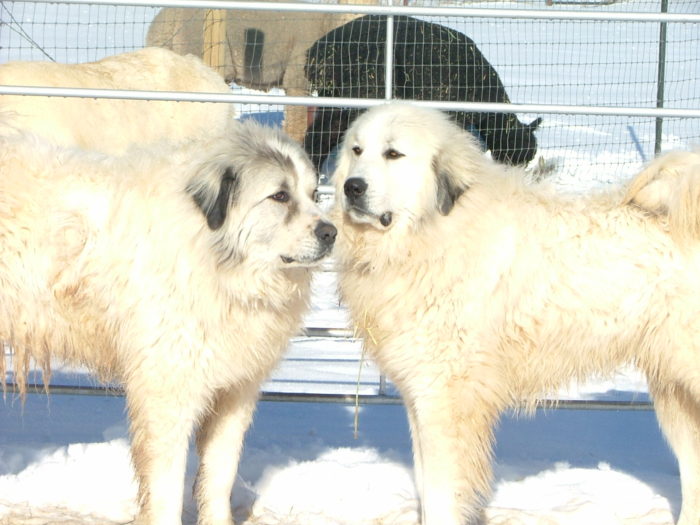
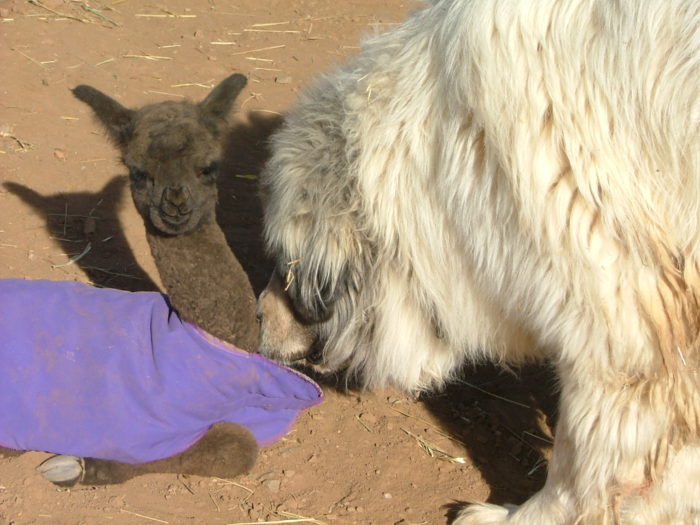
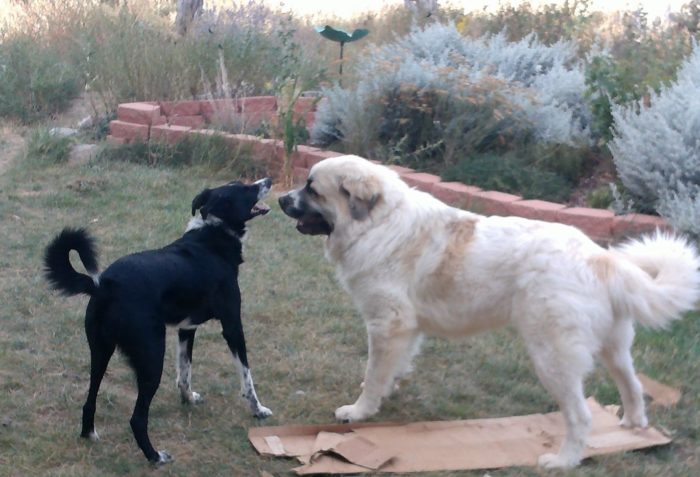
We brought two Great Pyrenees onto our property (originally Butch Cassidy and the Sundance Kid. Atticus Finch has now replaced Butch who died 18 mos. ago) to set up their “security system” (amazing dogs) even before our alpacas arrived. Besides being beautiful and loving animals, Great Pyrenees are bred to guard livestock herds from predators. They are nocturnal creatures who patrol the ranch all night, bark with deep and angry voices when they smell or hear approaching wildlife. Predators entering the property are dealt with “extreme prejudice.” Their breed has been known to tree and kill bears. As long as you don’t smell like a coyote they are friendly, cuddly (outdoors) adorable partners.
Knowing predators live here, we have also sought to maximize the ability of alpacas to survive an attack. Their pen areas have lots of room, so if attacked they will be able to both run and to stomp intruding predators. Our main breedline of alpacas is Accoyo, which is a particular genetic line that has large bone structure, height and strong legs to fight off most predators (as well as producing lots of fiber).
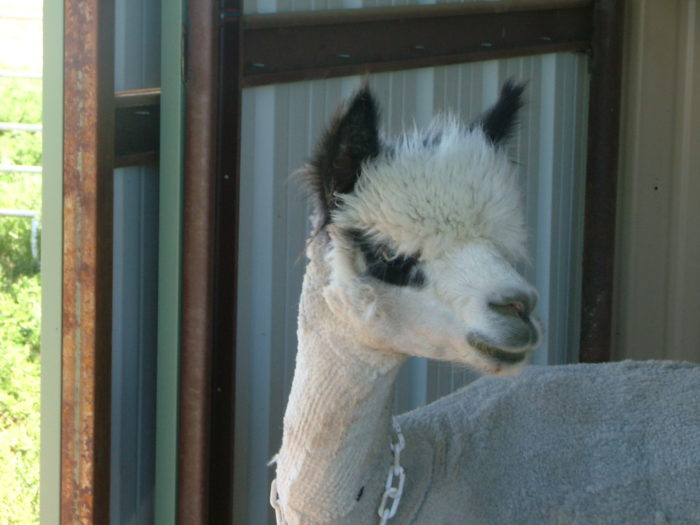
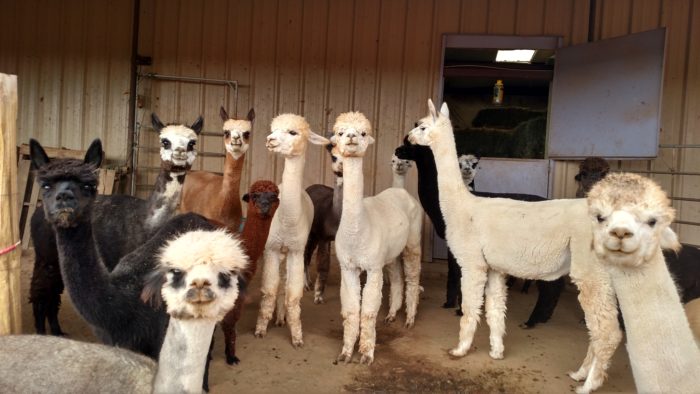
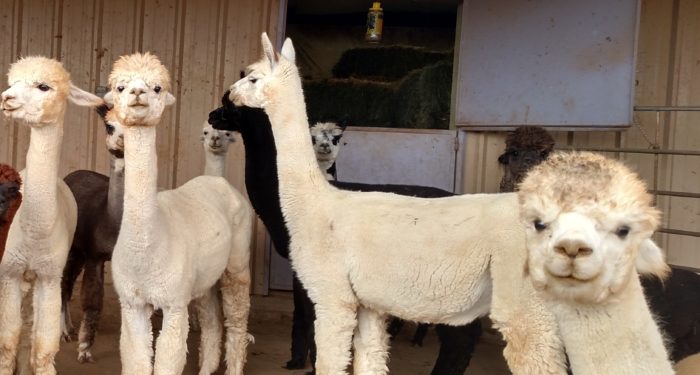
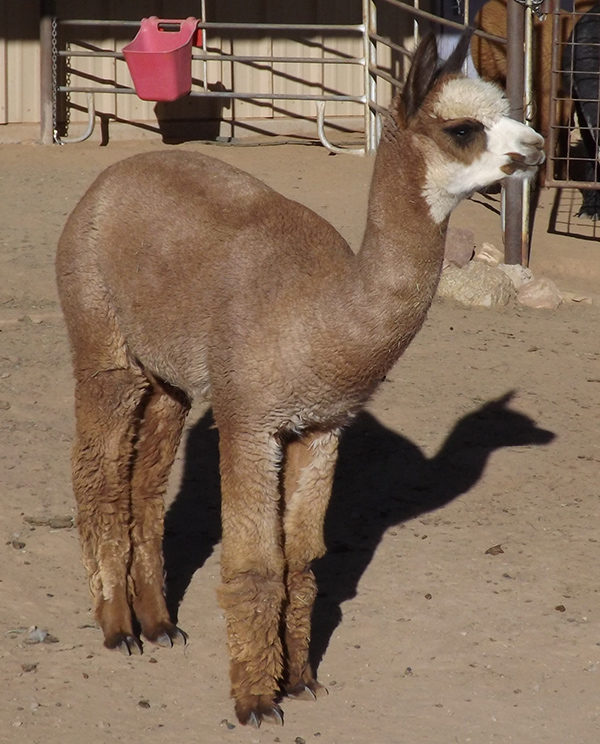
Eight years and no predictor attacks to our herd, until Friday evening. Sometime between dusk and dawn last Friday/Saturday an animal grabbed our youngest alpaca, Woodstock. (Some of you may remember that Woodstock was an unplanned cria, conceived during an alpaca breakout). Something grabbed and tore the fiber off his right back leg, taking with it a huge hunk of skin, leaving a gaping wound over 20 inches long, exposing all the muscle. Our vet (Western Trails Veterinary) had to stitch him back together using the available skin. Yikes, it looks awful and must feel even worse.
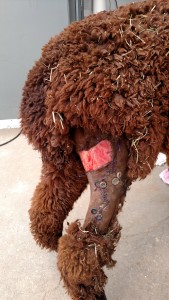
Woodstock After Vet
As it had rained that night, we found evidence of a struggle in the pen, but too many footprints to isolate the attacker with certainty. Based on available evidence and experienced opinion we believe the attacker was likely a bobcat, feral dog or mountain lion. We also believe that Woodstock survived this attack for two reasons. Woodstock’s fiber is so dense and long the jaws that grabbed him were filled with more fiber than skin. Second, the tracks evidenced that both the Great Pyrenees and the other alpacas rushed the attacker and chased it off before it could do more damage.
We have studied these predators in even greater detail trying to understand their behaviors. We are shocked to learn how much humans have caused the numbers of mountain lion, bobcat and bear populations to shrink nationwide as well as in our on backyard. Their disappearance impacts the balance of life and should concern all of us. Protecting our herd and financial investment can’t mean the “simple” elimination of the presumed predator. We need learn from this experience and readjust our alpaca protocols.
Daily life at Whispirit (and Whispering Spirit Alpacas) pulls us back to our larger universe, reminding us to respect and honor the purpose for all the life that surrounds us. We can and will learn from the surprises.
Til next time.
Sandy
